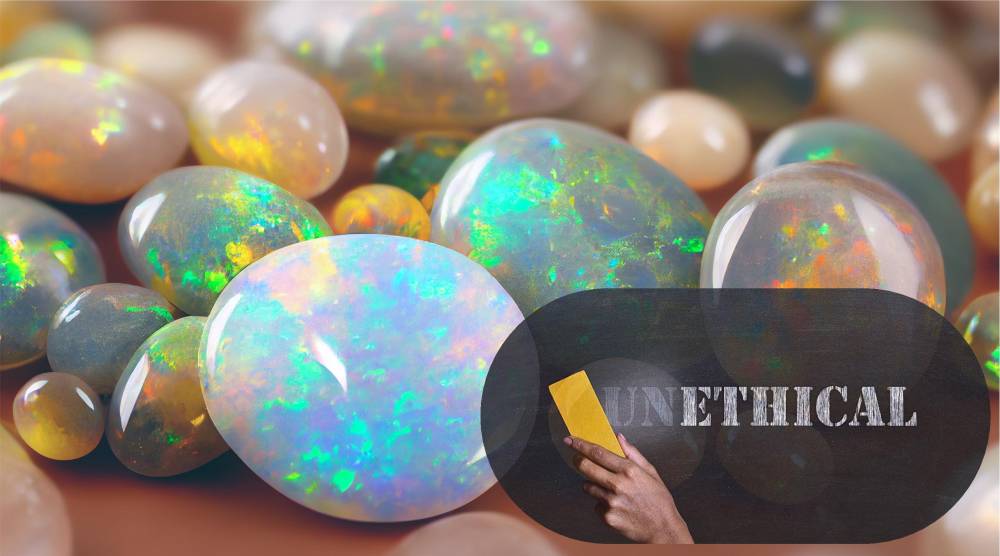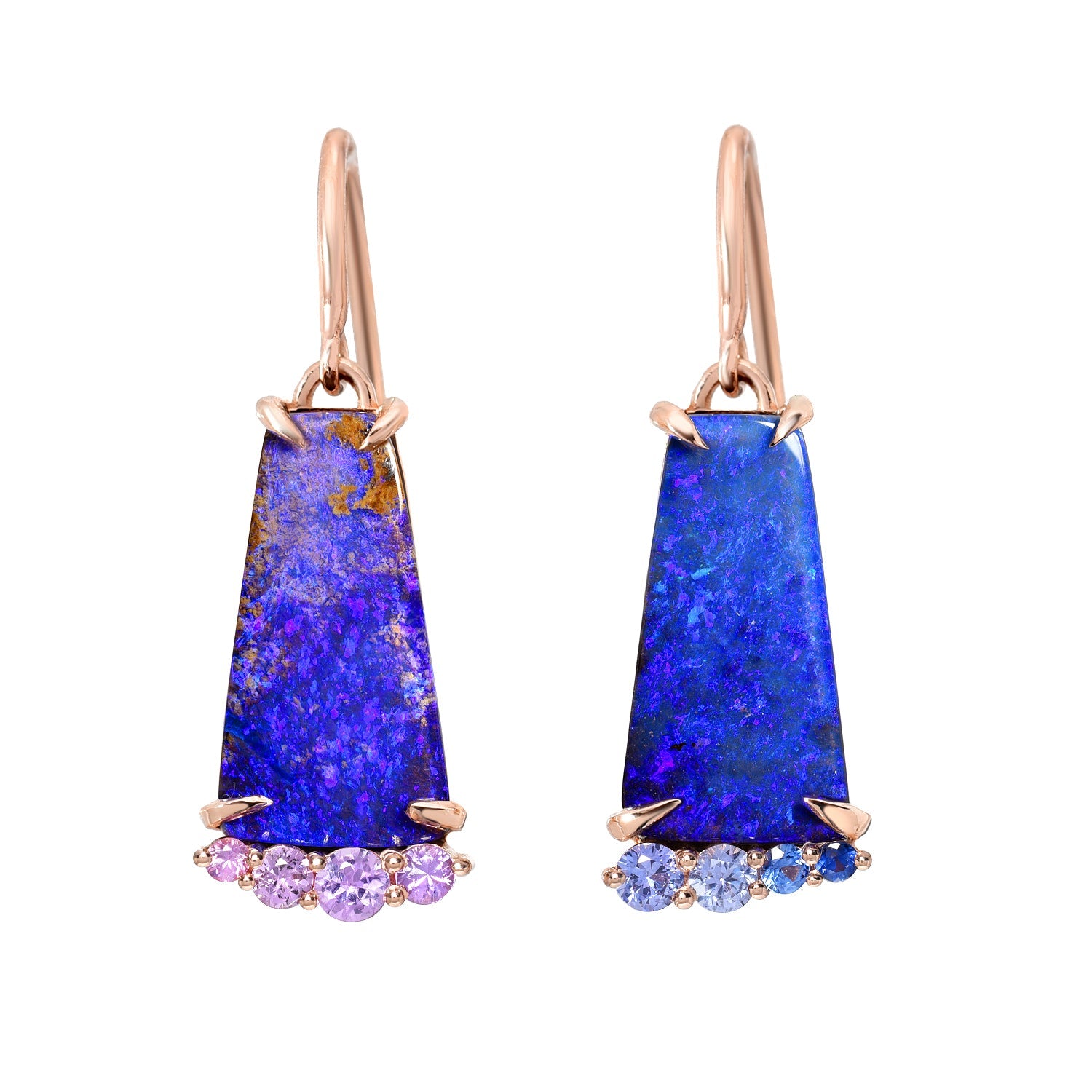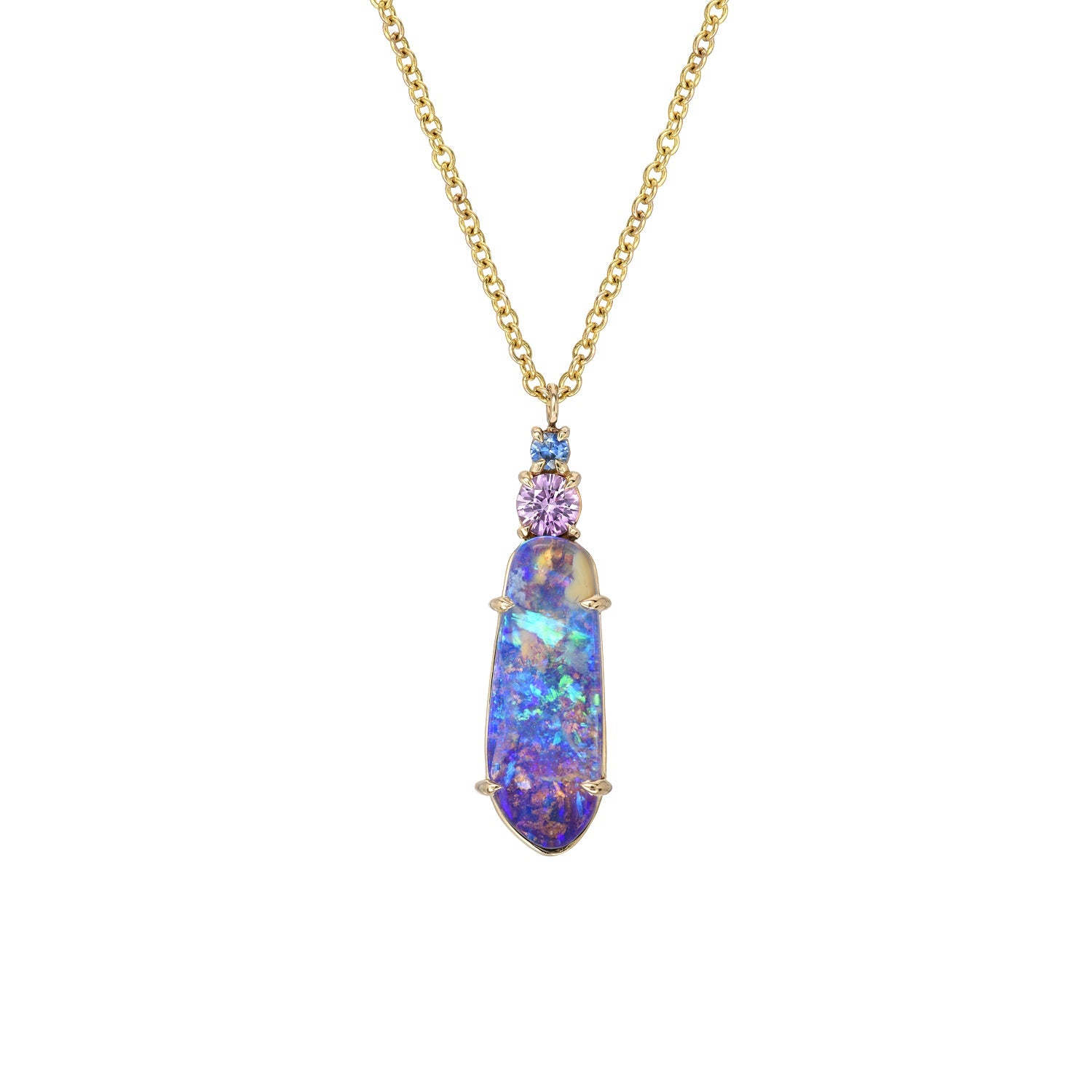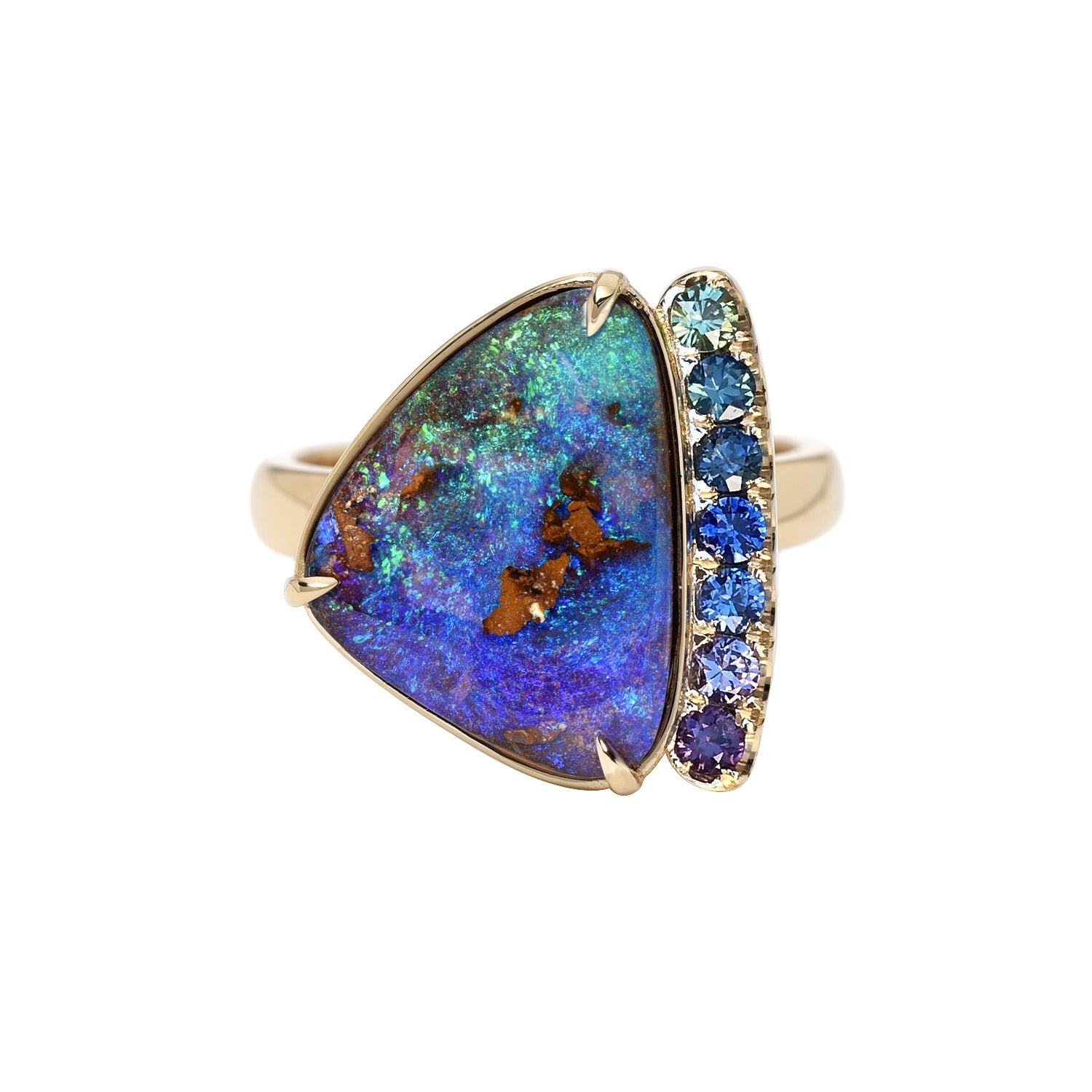
Ethical Opals --- Are you buying "conflict-free" gemstones?
luis gomezShare
Today, it’s estimated that conflict diamonds represent about 4% of the total diamond market — and some traders even think that the number could reach even higher, to about 15%. Still, it’s incredibly low compared to industry standards from the mid 20th century and early 21st century. Back then, conflict diamonds accounted for more than half the market. Thanks to various initiatives including UN missions, more clarity from governments, advocacy groups, and even movies - like 'Blood Diamond' starring Leo DiCaprio - the practice has diminished — primarily in the Sierra Leones where unethical discipline has cost the lives of over 4 million workers. We’ve undoubtedly come a long way. But what about other gemstones? What about Opals? Is there such a thing as conflict Opals? In this post we're going to explore the Opal trade, give you a peek behind the curtain of Opal excavation, and address IF there’s such a thing as Blood Opals.
Ethical Opals
“Conflict-free Opals”— though you know what we mean, within the industry we don’t generally use that portmanteau — they're more commonly referred to as “good trade Opals’ or “Ethical Opals.” When it comes to choosing Opal jewelry, particularly stones for opal engagement rings - which represent pure love - it’s incredibly important to take into account environmental concerns and human rights.
Opals are some of the most beautiful, extraordinary gemstones on the planet. They are incredibly attractive and have, for eons, been objects of desire. This means that, like all commodities and assets, they are at the mercy of market forces — demand and supply. And demand for Opals has been high, with a finite supply, driving a multimillion-dollar industry. Opals are fueling a thriving industry.
Luckily, right now, the biggest Opal mining regions in the world have strict policies regulating the trade. Particularly in regards to how they are sourced, mining methods, and some fundamental human rights metrics to adhere to.
When it comes to Opal mining, the two main questions - morally speaking - are:
Are Opals mined in such a way as to not adversely affect the environment?
Are the conditions for workers and miners safe?
The Past — long gone but not buried
The modern Opal explosion started in the late 19th century with the discovery of multiple mining veins in Australia — today the biggest exporter of that gemstone. By how much? Australia currently produces 95% of the Opal on the market. It’s one of the seven key countries where the gemstone is mined.
Back in those days, Opal mining was something akin to prospecting — only in a penal colony. It was rough, often grisly, full of malcontents, and host to all manner of dastardly violations enacted on a regular basis. Remember, back in that era there was no such thing as “Human Rights” — the concept hadn’t been invented or advocated.
Nevertheless, as Australia prospered the government started to form committees and adhere to international guidelines, to take into account the environmental impact and the conditions of workers at mines. By 2001, the International Council on Mining and Metals emerged, establishing guiding principles to invoke positive change within the industry and communicate clear performance expectations — including requirements miners had to meet before starting a dig.
Some parameters stipulated included checks and balances such as licenses, safe work conditions, and environmental impact studies. Today, Australia is one of the safest and most ethically fastidious places to procure Opals from. But, what about the other 6 places? What about the other 5%?
The vestigial 5%
The vestigial 5% includes mines in the US, Brazil, Mexico, Ethiopia, Honduras and the former Czechoslovakia. The biggest one of these is Ethiopia — after Australia, Ethiopia is the largest Opal producer in the world. Mining of Opal gemstones is a linchpin of their country’s economy. The industry generates about $25 million annually. For a region like Ethiopia, that’s a lot.
As such, the Ethiopian government strives to prioritize regulations and create sustainable mining. Its level best. The governmental intent is to uphold best practices and create regulations. This is both a blessing and a curse.
On one hand, most Opals are inspected by the right authority before they're exported — on the other hand, government interference in exportation has also driven a thriving smuggling industry. Not all miners in Ethiopia meet the requirements needed by the government for licenses and Welo Opals are extremely sought out in the West due to their captivating beauty (often at a lesser price than Australian Opals).
This translates to a portion of Ethiopian Opals being mined under questionable circumstances and smuggled out of the country, no longer staying true to the term “Ethical Opals.” Lines can become blurred, making it important to buy from reputable sellers whom you trust. For ethically questionable stones, ask the seller to provide more information regarding sourcing. In that event, it’s ideal to determine whether the Opal was sourced at a government-licensed mine or not before you decide to invest.
What about the rest?
Mexico, Brazil and other smaller mining communities around the world — how can you be certain you’re investing in ethical Opals when so many of these regions are rife with controversy and corruption and some, like Mexico, even home to furtive operations like the Cartel? The instability of government assurances does not mean the Opals in these nations are automatically unethical — it simply requires due diligence to assess their ethical standing.
For example, we fell in love with one Brazilian Opalfrom an Opal cutter and supplier we work with and trust. Because our own experience is predominantly with Australian Opals, we asked her about the sourcing for the Brazilian rough — how ethical is Brazilian Opal mining? She described it as ethical and explained that it's performed by small family type enterprises and, "Brazilians sell them themselves…the opal money actually support(s) families working in this industry. It’s very artisanal and small compared to other opal industries.” We love the idea of supporting small business — from the family in Brazil mining the Opals to the woman owned business in Canada cutting their Opals — so we bought the stone and dreamt up its perfect home.
Equilibrium Rose Gold Crystal Opal Ring
When purchasing Opals from regions lacking strong regulation, you can fact-check with your supplier by asking pertinent questions regarding the sourcing of the gemstones. Hard questions like:
- Are miners working in safe conditions? Are they receiving fair wages?
- What sort of licenses do the mines have?
- How are the local fauna and flora affected?
- What regulations are enforced by the government?
- Is there any federal oversight?
- How are the Opals imported into the States?
You may find they have the answers to all, some or even none of your questions, but you’re likely to discover that even the way they receive the question will tell you a lot about who you’re considering buying from. Whatever their response, ultimately, it’s about your level of trust.
Trust is pivotal to any purchase — particularly one made online. If you’re even considering one of our Opal pieces, we invite you to join our Insiders first; it’s a great way to get a feel for how we operate and what we believe in. We’d love the opportunity to earn your trust, and share a bit of our magic!




